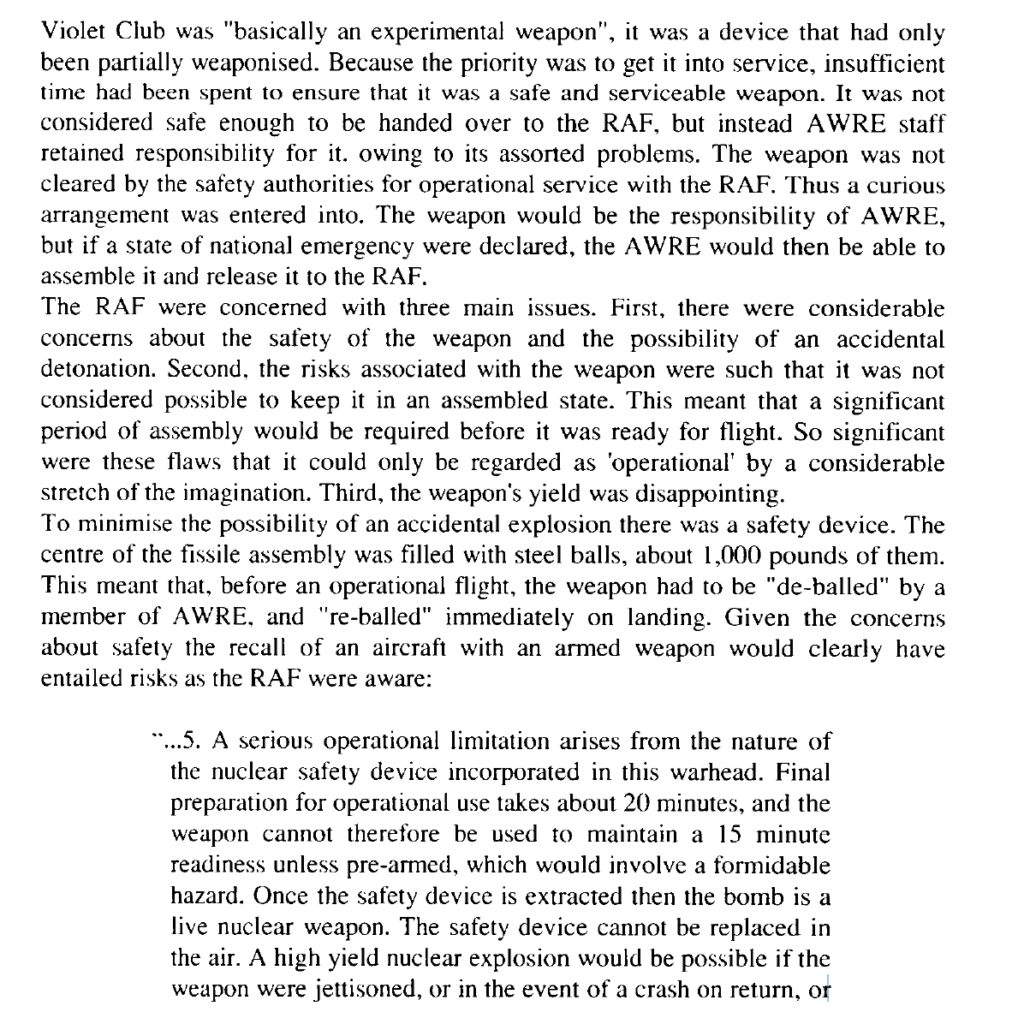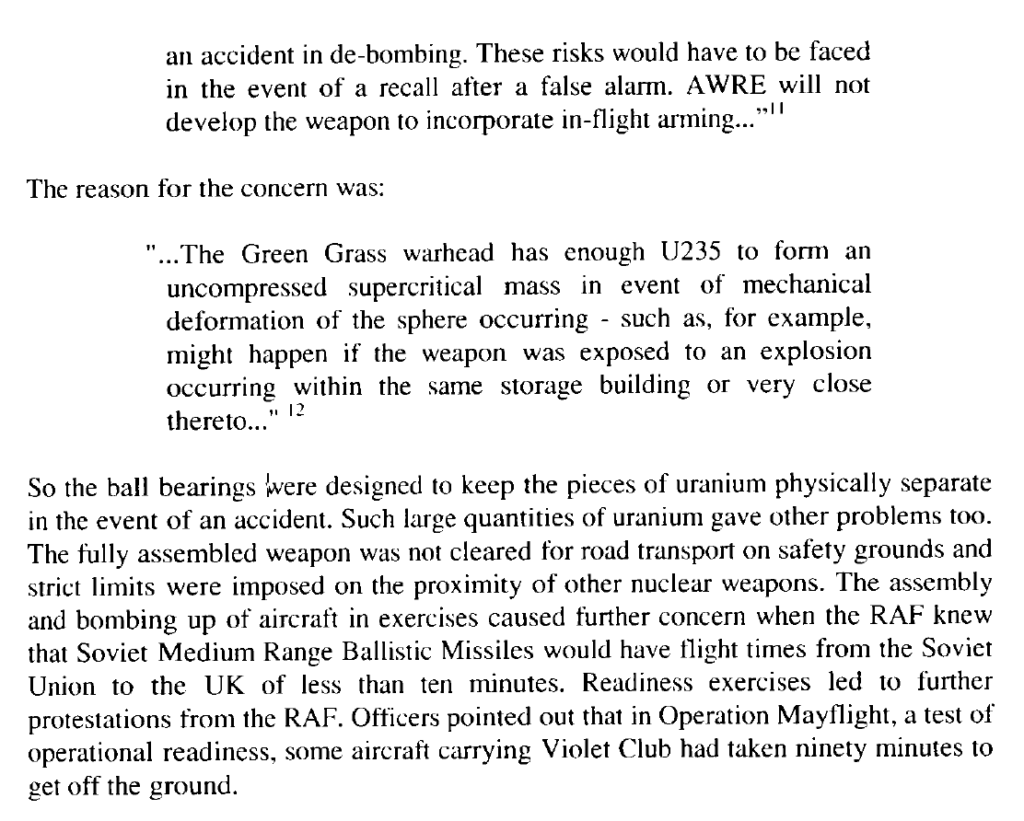A chapter titled “Developing the H-Bomb: An exercise in calculated Decision Making,” from the proceedings of this 2001 symposium in Stockholm, has a nice account of some of the history behind the UK’s nuclear weapons program(me).
Essentially, the chapter argues that, after deciding to build a thermonuclear weapon, the UK followed “two parallel developmental approaches.” The government tasked the Atomic Weapons Research Establishment with developing “both a fission weapon, code named Violet Club, and a two-stage design.” Despite concerns from other parts of the government, “the weapon was brought into service briefly before being replaced.” The chapter also asserts the lack of “any convincing argument” that this weapon “contributed in any significant way to the security of the UK.”
My knowledge of the British program is quite limited, so this may well be only new to me. One of my favorite parts of the chapter is its description of the risks associated with the interim weapon. The relevant part is below, but I must highlight this portion:
To minimise the possibility of an accidental explosion there was a safety device. The centre of the fissile assembly was filled with steel balls, about 1,000 pounds of them. This meant that, before an operational flight, the weapon had to be “de-balled” by a member of AWRE, and “re-balled” immediately on landing.
Anyway, here is the excerpt:


